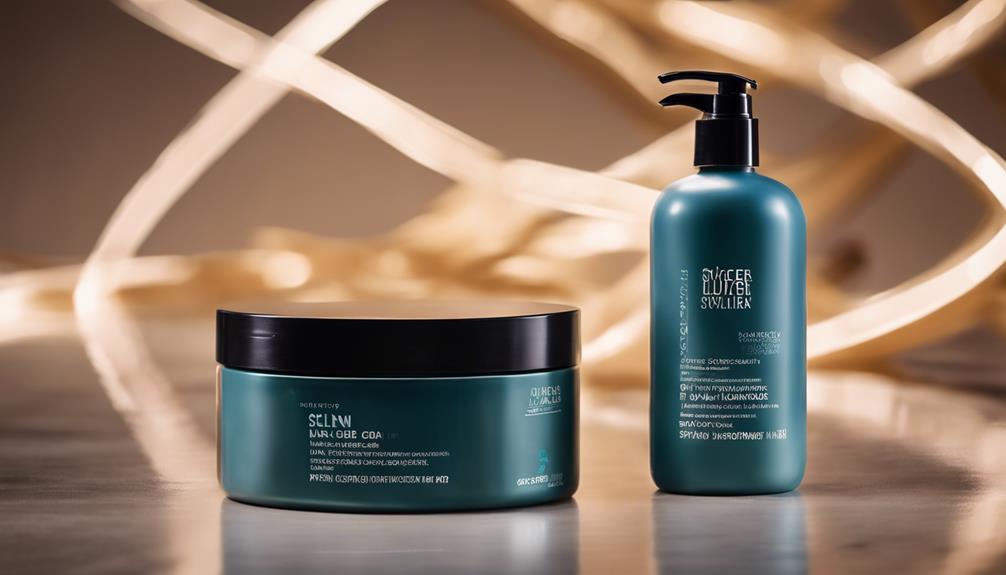When exploring the styles or approaches of a literature review, you will discover several effective methods to structure your research. An integrative review combines different studies to develop new frameworks, while a systematic review assesses evidence using standardized methods. Methodological reviews concentrate on research techniques, and argumentative reviews either back up or challenge existing claims. For a more general perspective, a narrative review offers a comprehensive overview without rigid boundaries. Each method has its own advantages, so selecting the most suitable one relies on your goals. Understanding these approaches can improve your work and establish a strong basis for your research journey.
Key Takeaways
- Integrative reviews synthesize diverse studies to create new frameworks and insights on a topic.
- Systematic reviews evaluate evidence using standardized methods for a comprehensive overview of research findings.
- Methodological reviews analyze research approaches in existing studies to assess their effectiveness and rigor.
- Thematic organization categorizes literature based on specific topics, enhancing clarity and focus in the review process.
Definition of RRL
A Research Literature Review (RRL) is a systematic compilation that helps you contextualize new studies within established research. By gathering existing literature and synthesizing findings from various scholarly articles, the RRL provides a thorough overview of the current state of knowledge in your field.
It's not just about summarizing; you analyze and categorize research studies to highlight key concepts and trends. In crafting an RRL, you aim to identify gaps in the existing literature, which can inform your future research directions.
Evaluating the quality of sources is essential, as it guarantees your findings are based on credible and relevant studies. This rigorous process enhances the credibility and rigor of your new research, making it a strong foundation for hypothesis formulation.
Ultimately, the RRL serves as a significant tool in the academic dialogue, allowing you to connect your work with broader scholarly discussions. It's about situating your research within the larger context, making sure that your contributions are meaningful and well-informed by previous studies.
Importance of RRL

Understanding the definition of a Research Literature Review (RRL) lays the groundwork for appreciating its importance in validating research significance and relevance within the academic community. The importance of RRL can't be overstated; it contextualizes your research within existing literature, showcasing its contribution to the field.
Here's a quick overview of the RRL's significance:
| Aspect | Description | Impact |
|---|---|---|
| Validates Research | Contextualizes your work with relevant literature | Enhances significance |
| Informs Methodology | Offers insights from previous research | Strengthens theoretical framework |
| Identifies Gaps | Highlights areas needing further exploration | Encourages scholarly dialogue |
A thorough literature review not only informs your methodology but also aggregates empirical evidence, supporting data interpretation and enhancing the credibility of your outcomes. By engaging with relevant literature, you guarantee your work remains impactful and updated with ongoing trends in your field. Ultimately, conducting an RRL is essential for any researcher aiming to contribute meaningfully to academic discourse.
Types of Literature Reviews

Different types of literature reviews cater to various research needs, each offering unique insights into the existing body of knowledge.
An integrative review synthesizes findings from diverse studies, generating new frameworks and perspectives that can deepen your understanding of a topic.
If you're looking for a thorough assessment, a systematic review critically evaluates evidence using standardized methods, ensuring a detailed overview of the literature related to specific research questions.
On the other hand, a methodological review focuses on analyzing the research methods utilized in existing studies. This type helps you grasp various analytical approaches and their effectiveness in addressing research problems.
If you aim to argue a point, consider an argumentative review. This type selectively examines literature to support or refute established arguments, showcasing the strengths and weaknesses of different positions within the field.
Writing a Literature Review

When writing a literature review, you need to clearly identify your research objectives to guide your search for relevant sources.
Next, synthesizing key findings from those sources will help you build a thorough understanding of the topic.
This process not only highlights gaps in existing research but also strengthens the validity of your own study.
Identifying Research Objectives
Clearly defining your research objectives is essential for guiding the literature review process and ensuring you explore relevant topics and identify gaps in existing studies. When you set specific, measurable, achievable, relevant, and time-bound (SMART) objectives, you can effectively direct your literature search and analysis. This clarity helps you formulate research questions that stem from your objectives, further refining the scope of the research.
Here's a quick reference table to illustrate the components of research objectives:
| Component | Description | Example |
|---|---|---|
| Specific | Clearly defined | Investigate social media impact on youth mental health |
| Measurable | Quantifiable or assessable | Measure changes in anxiety levels |
| Achievable | Realistic and attainable | Focus on teenagers aged 13-18 |
| Relevant | Directly related to the research field | Analyze recent studies on social media |
| Time-bound | Set deadlines for completion | Complete by the end of the semester |
Synthesizing Key Findings
Building on your defined research objectives, synthesizing key findings involves weaving together insights from various studies to create a cohesive narrative that directly addresses your research question. As you immerse yourself in your literature review, focus on integrating information from primary studies, ensuring that your synthesis highlights relationships between the findings. This process helps you identify gaps in knowledge and points of conflict or agreement within the existing literature.
When organizing synthesized findings, consider thematic or chronological arrangements. This approach enhances clarity and allows readers to easily follow how the literature aligns with your research objectives. Don't forget to incorporate critical evaluations of the methodologies and conclusions of the studies you're reviewing. By evaluating the relevance and quality of your sources, you strengthen the rigor and credibility of your literature review.
Ultimately, synthesizing key findings isn't just about summarizing what others have found; it's about creating a narrative that adds value to your research. By connecting insights thoughtfully, you're not only answering your research question but also contributing to the broader academic discourse in your field.
Strategies for Effective Reviews

To create an effective literature review, you should focus on organizing your findings systematically, evaluating your sources critically, and synthesizing key insights.
This approach not only enhances clarity but also strengthens the credibility of your work.
Organizing Literature Systematically
Organizing literature systematically is essential for crafting a coherent review that highlights relationships among sources and enhances overall clarity. By employing various strategies, you can create a structured framework that makes your review of literature more effective.
One popular method is chronological organization, which arranges sources by publication date. This approach helps trace the evolution of concepts and theories over time, providing insights into how ideas have developed.
Alternatively, thematic organization categorizes literature based on specific topics or issues, allowing for a focused analysis of key themes. This method facilitates comparisons across studies and helps you identify patterns or gaps in the research.
Additionally, using a methodological approach enables you to examine the research methods utilized in different studies, giving you a better understanding of their strengths and weaknesses.
You can also enhance your review by combining these strategies. For instance, incorporating both thematic and chronological elements can provide a richer context and deepen your analysis.
Ultimately, systematically organizing literature not only clarifies your findings but also strengthens the overall coherence of your review, making it a valuable resource for readers.
Evaluating Sources Critically
Evaluating sources critically is a key step in guaranteeing that your literature review isn't only well-organized but also grounded in credible and relevant research.
Start by appraising the authors' credentials and the credibility of the evidence they present. This provenance assessment lays the foundation for your evaluation.
Next, conduct a methodological evaluation by examining how data was gathered and analyzed. This helps you determine the robustness of the findings.
Don't forget to perform validity checks, which involve analyzing the significance and contributions of each source to your research topic. Verify you're including only the most relevant and impactful literature.
Additionally, engage in objectivity analysis; this means examining the author's perspective and how well they address alternative viewpoints.
Lastly, evaluate the persuasiveness of the arguments made. Discern which theses are compelling and which lack sufficient support.
Synthesizing Key Findings
Synthesizing key findings requires you to categorize literature into themes, which clarifies the relationships and trends within the research. To effectively synthesize your findings, consider the following strategies:
- Use a combination of qualitative and quantitative methods: This approach allows for a more thorough understanding of the literature, integrating diverse perspectives.
- Employ visual aids: Thought maps and diagrams can help illustrate connections between different studies and concepts, making synthesis more intuitive.
- Engage in critical evaluation: Assess the quality and relevance of your sources. This step identifies gaps in the literature and helps refine your focus.
- Regularly update your literature review: Incorporate the latest findings to guarantee your synthesis reflects current knowledge and research trends.
Evaluating Literature Quality

Evaluating literature quality is essential for guaranteeing that the research you rely on is credible and relevant to your work. When conducting literature reviews, you need to assess the provenance of your sources, including the author's credentials and affiliations. Understand the context in which the research was conducted, as this can impact the findings.
Examine the methodology used in the studies. High-quality literature should feature clear and transparent data collection and analysis techniques. Look for objectivity; the best sources present balanced viewpoints and address contrary evidence without bias.
Also, consider the persuasiveness of the arguments presented. A well-structured thesis supported by logical evidence enhances the credibility of the research.
Finally, determine the validity of the findings. You can assess this through the peer review status and how frequently the work is cited in subsequent research. This evaluation process helps you filter out unreliable sources and guarantees that you're basing your work on important information that contributes meaningfully to your field.
Common Mistakes to Avoid

Avoiding common mistakes in your literature review is essential for ensuring a thorough and credible analysis of your research topic. Here are some pitfalls to watch out for:
- Using irrelevant sources: Steer clear of sources that don't directly address your research problem. They can dilute your argument and confuse readers.
- Neglecting critical evaluation: Don't accept findings at face value. Always assess the reliability and validity of your sources to strengthen your review.
- Overreliance on secondary sources: Engage with primary research to gain deeper insights into your topic. Relying too much on secondary sources can lead to superficial understanding.
- Poor search procedures: Spend adequate time identifying relevant literature. Failing to describe your search procedures can undermine your review's credibility and leave critical studies unexamined.
Frequently Asked Questions
What Are the Styles or Approaches of Review of Related Literature?
You can explore several approaches for reviewing related literature. Consider chronological, thematic, methodological, conceptual, and comparative styles. Each offers unique insights, helping you understand the evolution of ideas and the effectiveness of various research methods.
What Are the 4 Methods of Literature Review?
You can use four key methods for literature review: chronological, thematic, methodological, and conceptual. Each method helps you organize and analyze existing research, offering unique insights into the topic you're exploring.
What Is RRL Style?
RRL style emphasizes objectivity and coherence in summarizing existing research. You synthesize literature, identify gaps, and propose future directions, while adhering to specific formatting and citation guidelines to guarantee professionalism and consistency in your review.
What Is the RRL Method?
The RRL method involves systematically gathering existing research to understand your study's context. It helps you identify knowledge gaps, strengthen your research's credibility, and lays the groundwork for formulating relevant hypotheses for your investigation. Using the RRL method will also allow you to build on existing theories and concepts in your field, providing a strong theoretical framework for your study. For example, if you are conducting a styling cream comparison study, the RRL method will help you understand what has already been researched in the area, allowing you to compare and contrast your findings with previous studies. This will ultimately contribute to the advancement of knowledge in this specific area of research.
Conclusion
In wrapping up, think of your literature review as a map guiding you through a dense forest of research.
By knowing the types, strategies, and evaluation techniques, you can navigate smoothly and avoid common pitfalls.
Just like finding the right path makes the journey easier, using these methods leads you to a clearer understanding.
Embrace the process, stay organized, and let your findings illuminate the way forward in your work.
Happy reviewing!









